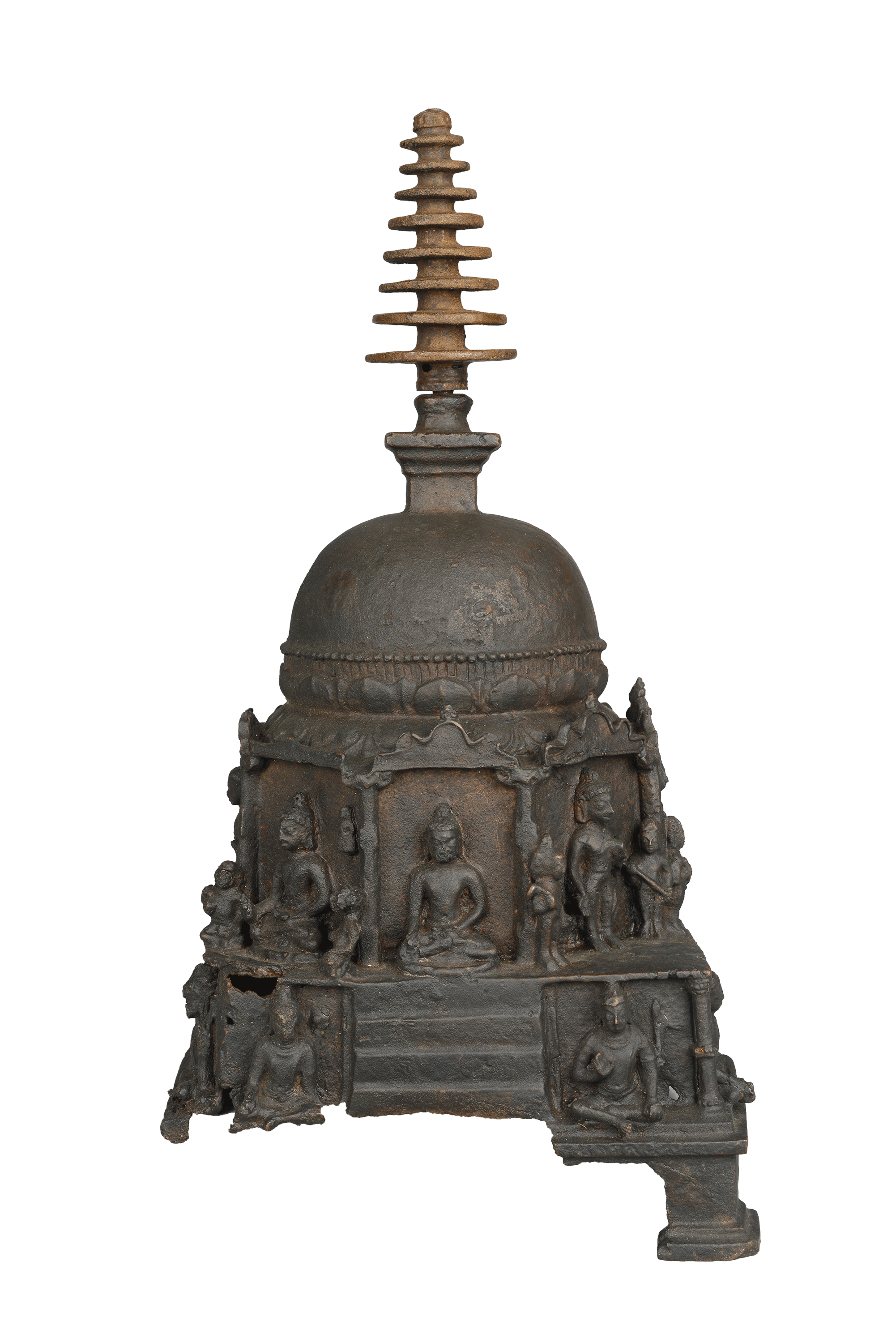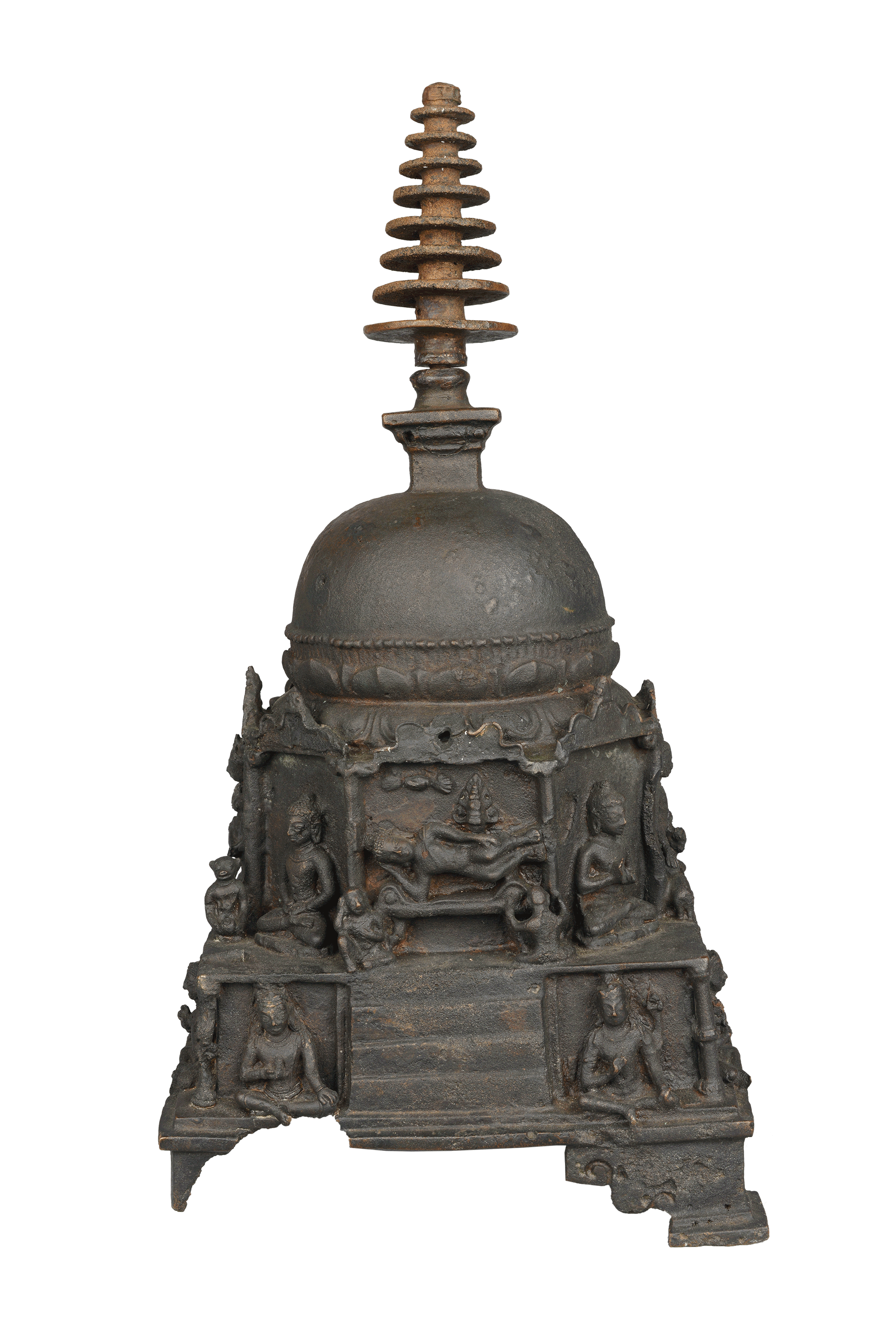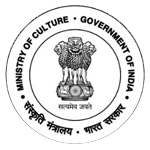Discover, Learn, immerse, Connect
Votive Stupa
This is perhaps the most elaborate metal votive stupa known from India so far with dimensions H 41.8 x W 20.7 x D 19.8 cm. The origin of this artefact can be traced back to Nalanda in Bihar. This is currently housed in the National Museum, Delhi.
This is perhaps the most elaborately presented metal votive stupa known from India so far. The square base has four steps (sopana) in four cardinal directions leading to pradakshina or a circumambulation path. There are enshrined panels in high relief depicting eight episodes from Buddha’s life. The panels surround the terraces on which a lotus supports the dome. Parasol rings tapering upwards in an inverted bell form can be seen. The eight rings of parasol could also represent the ashtanga-marga or the eight-fold path advocated by Buddha or even the eight vimokha or states of emancipation.
The four events presented in the four cardinal directions (clockwise) are:- a).The Birth of the Buddha: The scene represents the emergence of the child from Maya's womb being reverentially received by Indra; b) Buddha in Vajrasana calling the Earth to witness the defeat of Mara. c) Taming of the intoxicated elephant Nalagiri released by Devadatta at Rajagriha; d) Mahaparinirvana at Kushinagara, the two mourners are Ananda and Aniruddha. The divya-dundubhi or celestial drum with a palm on either side symbolises the welcome accorded by the gods. The other four panels in that sequence are: a) The descent of the Buddha from the Trayastrimsha heaven at Sankisha, accompanied by Brahma and Indra. The Buddha had been there to preach the Abhidhamma to his mother Maya. b) The miracle of Sravasti suggested by the image of the Buddha seated on a lotus above the left side. The two seated figures are Sariputta and Mahamoggalana. c) Buddha's sermon, dharmachakra-pravartana, at Mrigadava or deer-park at Sarnath. d) A monkey offering honey to the Buddha. The only identifiable Bodhisattva on the left of the steps leading to the Nalagiri panel is Manjughosha holding a khadga (sword). On one of the sides, over the steps, underneath the panel representing Buddha’s enlightenment was inscribed the Buddhist creed. The inscription has been obliterated and nearly lost through the passage of time.
 Government of India
Government of India




